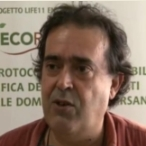Agronomic Approaches for Remediation of Contaminated Soils
A special issue of Agronomy (ISSN 2073-4395). This special issue belongs to the section "Soil and Plant Nutrition".
Deadline for manuscript submissions: closed (31 July 2020) | Viewed by 46601
Special Issue Editors
Interests: organic farming; agronomy soil fertility; agronomy bioremediation; soil erosion
Interests: soil fertility management; phytoremediation; ecosystem services; environmental pollution
Special Issue Information
Dear Colleagues,
Soil contamination is worldwide threat to human health and environmental quality. The more widely used remediation techniques destroy soil fertility, making it unsuitable for growing plants. Biological approaches for the remediation of contaminated soils are increasing, since they allow one to reduce economic cost while at the same time safeguarding soil quality and ecosystem services. Ecological structures, such as permanent turfgrass, and tree or cane stands, allow one to secure contaminated sites by interrupting contaminant movements toward other environmental compartments. Selected plants can be useful for extracting the bioavailable fraction of PTEs. Plants can also be used for risk assessment (e.g., phytoscreening, risks of food chain contamination). Several agronomic or biological tools can improve the efficiency of remediation (e.g., compost fertilization, PGPR for improving phytoextraction or bioremediation). Please share your success stories from research in contaminated sites around the world in this Special Issue. Submissions on but not limited to the following topics are invited: (1) Iinnovative and novel approaches for risk assessment (chemical or biological tools for evaluating bioavailability); (2) agronomic practices related to improve phytostabilization, phytoextraction, and rhizofiltration; (3) valorisation of biomasses produced in contaminated sites; (4) use of crops for risk assessment of contamination of food-chain; (5) the impact of phytoremediation on soil ecosystem services; and (6) soil-plant-microbial interactions at the rhizosphere level.
Prof. Dr. Massimo Fagnano
Dr. Nunzio Fiorentino
Guest Editor
Manuscript Submission Information
Manuscripts should be submitted online at www.mdpi.com by registering and logging in to this website. Once you are registered, click here to go to the submission form. Manuscripts can be submitted until the deadline. All submissions that pass pre-check are peer-reviewed. Accepted papers will be published continuously in the journal (as soon as accepted) and will be listed together on the special issue website. Research articles, review articles as well as short communications are invited. For planned papers, a title and short abstract (about 100 words) can be sent to the Editorial Office for announcement on this website.
Submitted manuscripts should not have been published previously, nor be under consideration for publication elsewhere (except conference proceedings papers). All manuscripts are thoroughly refereed through a single-blind peer-review process. A guide for authors and other relevant information for submission of manuscripts is available on the Instructions for Authors page. Agronomy is an international peer-reviewed open access monthly journal published by MDPI.
Please visit the Instructions for Authors page before submitting a manuscript. The Article Processing Charge (APC) for publication in this open access journal is 2600 CHF (Swiss Francs). Submitted papers should be well formatted and use good English. Authors may use MDPI's English editing service prior to publication or during author revisions.
Keywords
- Phytoscreening
- Assisted phytoremediation
- Risk assessment
- Dietary exposure
- Interrupting exposure pathways
- Soil ecosystem services
- Rhizosphere
- Bioavailability evaluation
- Plant-soil interactions
- Soil conservation and recovery.






